Slovenia is a state located in the pre-alpine part of the Balkan Peninsula. It borders Italy in the west, Austria in the north, Hungary in the east, and Croatia in the east and south. It is washed by the waters of the Adriatic Sea.
A lot of rivers flow through the territory of Slovenia. The largest rivers are the Sava and Drava, the tributaries of the Danube. Lakes of glacial and karst origin are scattered throughout the territory of the country.
Slovenia has its own fishing peculiarities, like every country located on the shores of the Adriatic Sea. We decided to ask our friend and wonderful fisherman Peter Kodre Sampei about these features. He lives in the city of Koper, the largest city on the 50-kilometer Slovenian coast, located in the close proximity to the Italian border.
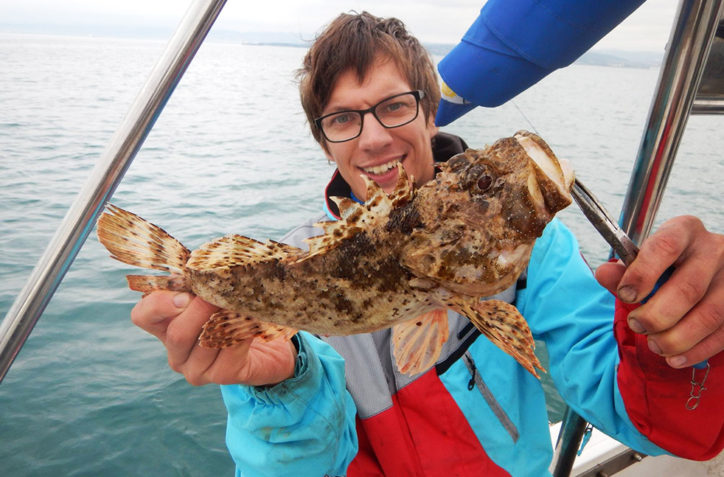
(Peter Kodre Sampei. Photo © Peter Kodre Sampei)
Hello, Peter! Thank you for agreeing to tell us about the features of fishing in Slovenia. Let’s start our conversation with sea fishing. The north-west part of the Adriatic Sea, located in the territorial waters of Slovenia, is characterized by shallow depth – the maximum depth is about 35 meters. And this certainly influences the fish species composition and fishing techniques. What fish can be caught in case of shore fishing?
Hello, as you said the Slovenian part of the Adriatic Sea is very shallow, the average depth is only 17m, which makes this part very peculiar. A small volume of water is affected by the temperature, which rises from 5 degrees in winter up to 30 degrees in summer. The best periods for fishing are spring, when the water starts to warm up and the fish come close to the shore and autumn, when fish are preparing for winter and increase a nutrient uptake.
People who love spin fishing should target European seabass from the shore near the rocks on warmer days and on the canals on colder days. However, in the last years, because of progress in tackle equipment, fishermen also go spin fishing for leefish, which can be here pretty big and come close to the shore.
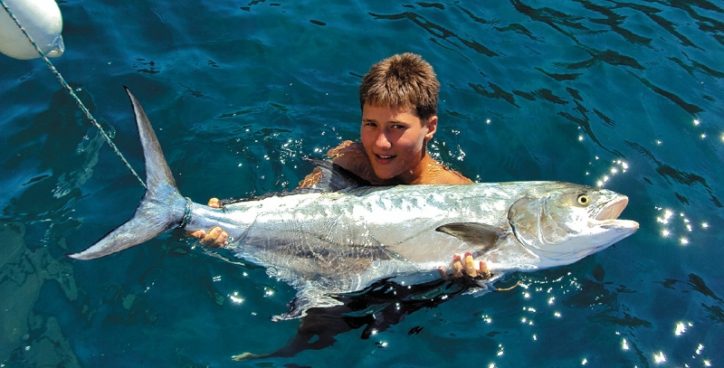
(Slovenian leerfish. Photo © val-navtika.net)
Spring and autumn are a good time for egging cuttlefishes and squids, whereby cuttlefishes are the most common catch. Nevertheless, big Adriatic squids aren’t rare.
The main target for people who practice surf casting here is the Gilt-head bream known as ‘’Orata’’. The smaller specimens can be caught in large numbers. The bigger ones swim close to the coast only in some spots.
You spend a lot of time fishing from the motor boat. Tell me, please, what fish species are you searching for in different seasons?
As I said before, we have very variable seasons. I start the season in April with egging from the boat near rocky points for bigger squids and cuttlefishes. Hopefully, if the bluefin tunas come we also go fishing for tuna.
In spring the temperature of the sea rises, and we start to catch sea breams – common pandora, known as ‘’ribon’’.

(Common pandora caught with inchiku. Photo by © Peter Kodre Sampei)
On the hottest days we do evening fishing for ‘’orata’’ in the middle of August.
When the temperature of the sea is the highest, the most attractive fish for casting, mahi-mahi, occurs. I love to catch it with spin equipment, but many of my customers love to fly this fabulous predator. They come in larger schools and circle under floating objects (such as buoys). When the temperature drops, the schools leave the gulf and we start to fish more offshore for mackerel or in the bay for common pandora.
In late autumn we start to fish for cuttlefishes and squids again.
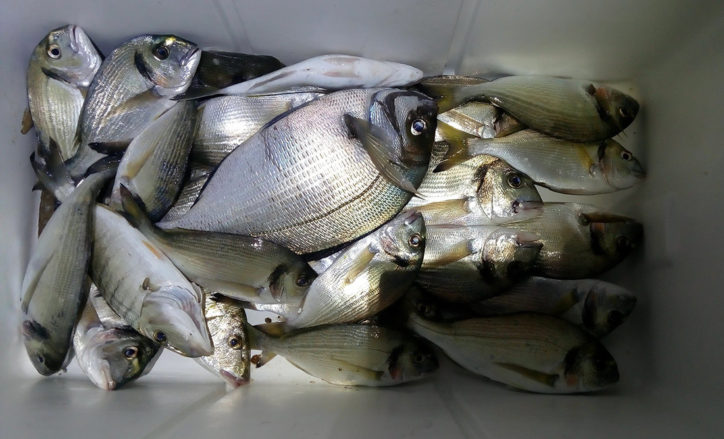
(Assorted fish of the seabream family. Photo by © Peter Kodre Sampei)
Tell me about the sea fishing records in the sea waters of Slovenia.
The biggest fish caught from the shore with spin fishing equipment was the leefish weighing 24.5 kg, a really amazing catch. As for the offshore fishing, I should definitely mention the bluefin tuna, but there are no records about the catches, because in the past years there was no monitoring, since it is illegal to fish for this predator in Slovenian waters.
As for other records, every year some squids over 2kg are caught.
There is an old photo of a huge sea bass (10kg plus) caught on trolling fishing.

(European seabass weighing 7.48 kg caught near the town of Koper. Photo by © Tomaz Cergolj. ribiskekarte.si)
As for mahi mahi, the biggest one I caught was 2.2kg but my friend got one around 4kg. Hopefully, the number of them will increase every year, because of global warming among other factors, and I would love to get a bigger one.
What can you say about fishing in freshwater bodies of Slovenia? One of the “magnets” attracting fishermen to your country is huchen or Danube salmon. What other fish can be caught purposefully and successfully in rivers and lakes?
In Slovenia, we have a very big variety of fishermen, because you can find a lot of different fishing districts. In the east part of Slovenia, there are many lakes well populated with big catfishes and carps. Catches over 25kg or even over 30kg were recorded there.

(European carp weighing 20.2 kg caught in Lake Ptuj, Slovenia. Photo © ribiskekarte.si)
In Lake Cerknica, which is the biggest Slovenian lake and the largest intermittent lake in Europe, we have a history of pike fishing.
The rivers are very well populated with fish and clean so local fishermen across the whole country enjoy coarse fishing for chub, barbel and nase.
Mainly Slovenia is world famous for the Soča river, also called the emerald river because of its special color. The Soča river and its tributaries are populated with the famous Marble trout and the Adriatic grayling, which inhabits only the rivers that flow into the Adriatic Sea. But it is allowed only to fly fish on these rivers.
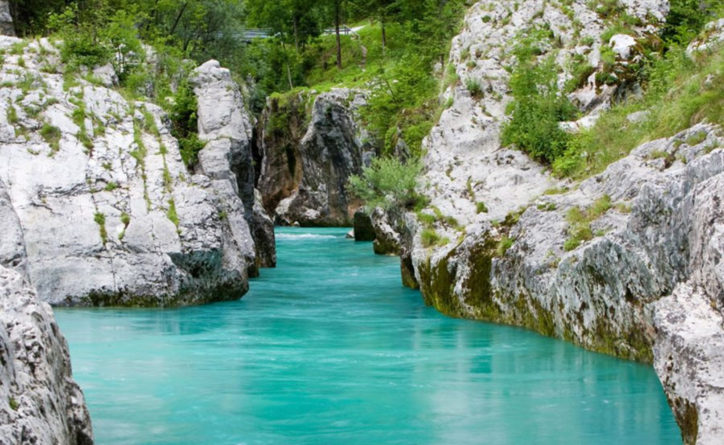
(Soča. Photo © stdaniel.si)
Sea fishing from Slovenian coast doesn’t require obtaining a license and is permitted to everyone interested, unlike fishing in freshwater bodies. Tell us, please, is it easy for a guest of your country to obtain a license to fish in rivers and lakes and the basic principles of filing these licenses in various water bodies?
Yes, you don’t need any license for sea fishing from the coast, but if you want to go fishing from the boat you need a license which costs 7€ per day, you can buy it online on the day of fishing.
For fishing in inland waters, you need to buy a license and report a catch if you decided to take it. Mainly all the licenses can be easily bought online.
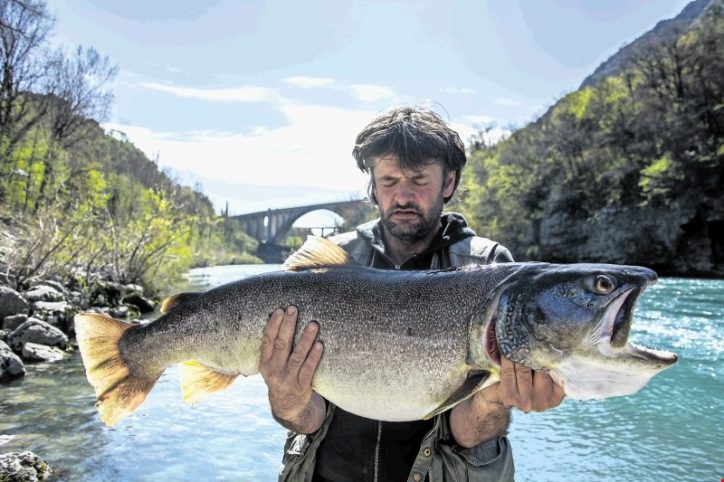
(Marble trout from the Soča river weighing 12.5 kilograms. Photo by © Robert Prando. dnevnik.si)
If you like fishing for trout, you should know that all the best rivers are exclusively fly fishing and only with artificial fly and pressed barb single hook. It is allowed to do spin fishing with artificial bait.
For pike and zander and in some cases a piece of dead fish can be used for zander.
The huchen or Danube salmon in Slovenia can be caught only in a winter fishing season, the season starts in October and ends on the 14th of February. For this predator, it is manly allowed to do spin fishing or fly fishing with artificial flies or lures bigger than 10 cm.

(Huchen or Danube salmon from Slovenia. Photo © ribiska-druzina-bled)
Tell us, what “shtick” of fishing in Slovenia should attract fishermen to the shores of the water bodies of your amazingly beautiful country?
Here on the Slovenian coast, as mainly on the whole Adriatic coast, we have a strong tourist season in summer. The calm and warm sea up to 30°C entertains the tourists and keeps the mahi mahis around the buoys for great offshore fishing fun. The mahi mahis are the most attractive fish to catch, because of their aggressive behavior. I like when they attack the surface lures the most.
However, Slovenia is worldwide known as a fly fishing country and so lots of people who like fly fishing come here every year. This is a main reason why I started to offer fly fishing for mahi mahi and the guests are very excited about it.

(Mahi-mahi. Photo by © Peter Kodre Sampei)
Later, when it gets colder and the tourist leave the coast, the hotels get closed, the swimmers stop swimming, the shore becomes a paradise for spin fishermen. They target squids, cuttlefishes and seabasses, the more optimistic go for the leerfish.
Our piece of Adriatic Sea is also special for it calmness, basically there are no currents, and the winds do not blow very much, like they do on the ocean or in Dalmatia. Even if they don’t catch the biggest fish in their life, fishermen get much joy and relax during the time spent on the sea.